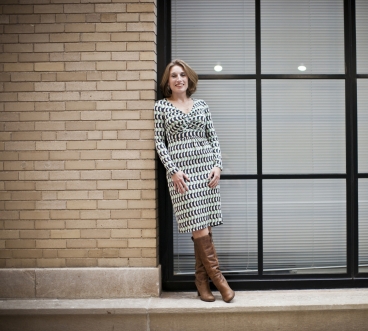Krystyn Van Vliet, who was assigned the designation of the Paul M. Cook Career Development Associate Professor of Material Science and Engineering and Biological Engineering, has come from a background where she had only a modest level of exposure to technology or science.
Nevertheless, she recalls that she was inspired by the farmers in southern New Jersey and their handling of multifaceted equipment such as potato harvesters and their ease of handling biology questions such as the nitrogen requirement in the soil to make the pepper fruit produce more quickly than the leaves.
 "Krystyn Van Vliet, the Paul M. Cook Career Development Associate Professor of Materials Science and Engineering and Biological Engineering. Credit: Dominick Reuter"
"Krystyn Van Vliet, the Paul M. Cook Career Development Associate Professor of Materials Science and Engineering and Biological Engineering. Credit: Dominick Reuter"
In addition to her experience in farms her period of stay when she was just 13 at Space Camp, a learning program organized in Huntsville, Ala, and the high level technical matter has furthered her interest into academic research on topics ranging from how cancer cells draw new blood vessels to enhance their growth to the microscopic structure of concrete. But all her lab experiments and computer models carried a common thread to know how mechanics and chemistry are strongly linked in materials that are significant to human survival.
She chose to join the Brown University to get degrees in both bioethics and biomedical engineering and progressed with encouragement from her professors. She was encouraged to join MIT by Kirk Kolenbrander, the then material science and engineering faculty at MIT and earned her Ph.D. in 2002 within four years, submitting a thesis on forecasting defect nucleation in metals. On completing her doctorate, she was offered to join as a faculty in the Materials Science and Engineering Department. Before coming back to MIT in 2004 as an assistant professor she was with Children’s Hospital Boston as a Postdoc studying the way how mechanical strain influences chemical activity of enzymes associated to the development of blood vessels.
She has been conducting research on material chemomechanics, a union between mechanics and chemistry. Her group has depicted the way tissue cells react to changes in their chemical and mechanical environment, which includes those changes that cause cancer by researching nonbiological materials that contribute to mechanical and chemical union, polymers that can imitate some attributes of tissues, nanocomposite coatings that assist in bettering the sturdiness of car bodies and how the water held in small pores of cement-based materials control their mechanical attributes.